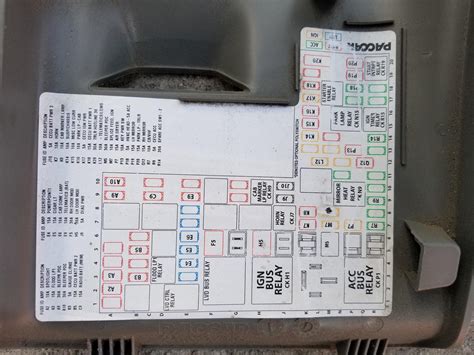hydro power plant with diagram by Lex Fridman
Efficient Hydro Power Plant: Empowering Sustainability [Diagram]
Get the lowdown on hydro power plants! Dive into diagrams revealing the inner workings of clean energy production. Learn, visualize, power up!
Alright, listen up, folks. You ever wonder about those hydro power plants? You know, the ones churning out clean energy like it’s nobody’s business? Let me tell ya, they’re something else. You got water flowing, turbines spinning, and electricity buzzingall in harmony. It’s like nature and technology shaking hands, saying, “We got this.” Now, picture this: a diagram breaking down the whole process, like your own personal backstage pass to the power grid. Yeah, that’s what we’re talking about.
Understanding Hydro Power Plants with Diagrams
Hydro power plants harness the force of flowing water to generate clean, renewable energy. With diagrams, you can grasp their intricate workings effortlessly.
Picture this: massive turbines whirring as water rushes through, converting kinetic energy into electricity. It’s a powerhouse of sustainability, producing energy without harmful emissions.
Hydro plants boast remarkable efficiency, often exceeding 90%, making them one of the most reliable sources of renewable energy worldwide.
Moreover, these plants are highly adaptable, capable of providing electricity to both urban and remote areas, ensuring power stability for diverse communities.
When it comes to environmental impact, hydro power plants are champions. They produce minimal greenhouse gas emissions and have a small ecological footprint compared to fossil fuel-based alternatives.
With advanced technology and innovative design, hydro power plants continue to evolve, offering scalable solutions for meeting the energy demands of tomorrow.
Embrace the potential of hydro power plants and dive into the diagrams, unlocking the secrets to sustainable energy production for a brighter future.
The Power of Hydro Plants: An Overview
Hydro power plants stand as monuments to human ingenuity, harnessing the raw power of water to fuel our energy needs sustainably. Picture a serene river transformed into a bustling hub of renewable energy, all thanks to the engineering marvels of hydroelectricity.
Unveiling the Working Mechanism
Within the heart of a hydro power plant lies a symphony of movement and transformation. Turbines spin, generators hum, and water cascades with purpose, all orchestrated to convert kinetic energy into the lifeblood of our modern world: electricity.
Clean Energy for a Sustainable Tomorrow
One of the most compelling aspects of hydro power plants is their ability to produce clean, renewable energy without the harmful emissions associated with fossil fuels. It’s a beacon of hope in our fight against climate change, offering a path to a greener future.
Assessing Environmental Impact
While hydro power plants boast impressive environmental credentials, it’s essential to acknowledge their potential impact on local ecosystems. Careful planning and management are paramount to mitigate any adverse effects on aquatic life and habitats.
Engaging with Local Communities
Hydro power plants are not just engineering feats; they are also catalysts for community development. From job creation to infrastructure improvements, these projects have the potential to uplift and empower the areas they serve.
Embracing Technological Advancements
The realm of hydro power is not stagnant; it’s constantly evolving with advancements in technology and innovation. From more efficient turbines to smarter grid integration, these developments promise a brighter, more sustainable future.
Considering Global Impact
As we navigate the complexities of our interconnected world, it’s crucial to recognize the global impact of hydro power plants. They stand as beacons of cooperation and progress, transcending borders to address our shared energy challenges.
Looking Ahead: A Vision for Tomorrow
As we peer into the future, the role of hydro power plants remains pivotal in our quest for sustainability. With thoughtful planning, collaboration, and innovation, we can harness the power of water to illuminate the path toward a brighter, greener tomorrow.
Hydro power plants with diagrams are remarkable feats of engineering and nature intertwined, creating a sustainable source of energy that powers communities worldwide. When you delve into the intricacies of hydro power plants with diagrams, you uncover a world where the force of flowing water drives turbines, generating electricity while minimizing environmental impact. Let’s explore the marvels of hydro power plants, understanding their inner workings and the profound impact they have on our planet.
Understanding Hydro Power Plants
At their core, hydro power plants utilize the kinetic energy of water to produce electricity. As water flows downhill, it spins turbines connected to generators, converting mechanical energy into electrical energy. This process, known as hydroelectric power generation, is a cornerstone of renewable energy production.
The Role of Diagrams
Diagrams serve as invaluable tools in comprehending the complex mechanisms within hydro power plants. They illustrate the flow of water, the positioning of turbines, and the transfer of energy with clarity and precision. By visualizing the process, diagrams enhance our understanding and appreciation of hydroelectric power generation.
Sustainability and Environmental Impact
One of the most compelling aspects of hydro power plants is their sustainability. Unlike fossil fuel-based power plants, hydroelectric facilities produce minimal greenhouse gas emissions, mitigating the harmful effects of climate change. Additionally, the reservoirs created by hydroelectric dams serve as habitats for aquatic life and recreational spaces for communities.
Advantages of Hydro Power Plants
The benefits of hydro power plants with diagrams extend beyond environmental sustainability. They offer reliable and consistent energy production, contributing to grid stability and reducing dependency on fossil fuels. Furthermore, hydroelectric power is cost-effective over the long term, as the fuel sourcewateris abundant and free.
Flexibility and Adaptability
Hydro power plants exhibit remarkable flexibility, capable of adjusting output levels based on demand. By controlling the flow of water through turbines, operators can respond swiftly to fluctuations in electricity consumption, ensuring a stable power supply for communities and industries.
Energy Storage and Grid Integration
Another advantage of hydro power plants is their inherent ability to store energy. By regulating the flow of water and adjusting reservoir levels, hydroelectric facilities serve as natural energy storage systems. This feature is particularly valuable in regions with variable energy demands or intermittent renewable energy sources.
Challenges and Considerations
Despite their numerous benefits, hydro power plants with diagrams also face challenges and considerations. The construction of large-scale dams can have significant environmental and social impacts, including habitat disruption, displacement of communities, and alteration of river ecosystems.
Environmental Concerns
The environmental footprint of hydroelectric projects must be carefully evaluated, considering factors such as water quality, sedimentation, and biodiversity loss. Additionally, the construction and operation of dams can disrupt natural river flows, affecting downstream ecosystems and indigenous communities.
Technological Innovations
Despite these challenges, ongoing advancements in hydro power technology offer promising solutions. From fish-friendly turbines to improved sediment management techniques, engineers and researchers continue to innovate, striving to minimize the environmental impact of hydroelectric projects while maximizing their efficiency and sustainability.
The Future of Hydro Power Plants
As we look to the future, hydro power plants with diagrams will play a vital role in the transition to a clean energy economy. With growing concerns about climate change and energy security, the importance of renewable energy sources cannot be overstated.
Integration with Renewable Energy Systems
Hydro power plants complement other renewable energy sources such as solar and wind power, providing a stable and reliable foundation for the energy grid. Through smart grid technologies and interconnection strategies, we can harness the full potential of renewable energy resources while ensuring grid stability and resilience.
Educational Outreach and Awareness
Furthermore, educational outreach and public awareness initiatives are essential in fostering a deeper understanding of hydroelectric power and its role in shaping our energy future. By engaging communities and stakeholders in dialogue and education, we can empower individuals to make informed decisions and advocate for sustainable energy policies and practices.
In conclusion, hydro power plants with diagrams represent a remarkable fusion of human ingenuity and natural forces, offering a pathway to a cleaner, more sustainable energy future. By embracing innovation, addressing environmental challenges, and promoting collaboration and awareness, we can harness the power of water to propel us towards a brighter tomorrow.
When it comes to hydro power plants with diagrams, the possibilities are endless. Here’s why they’re worth exploring:
- Hydro power plants utilize the natural flow of water to generate electricity, providing a clean and renewable energy source for communities worldwide.
- With detailed diagrams, understanding the complex mechanisms behind hydroelectric power generation becomes accessible to everyone, from students to industry professionals.
- These plants offer a sustainable solution to our energy needs, reducing reliance on fossil fuels and mitigating environmental impact.
- Hydro power plants boast impressive efficiency rates, often exceeding 90%, making them a reliable and cost-effective energy option in the long run.
- Furthermore, hydroelectric facilities contribute to grid stability and energy security, providing consistent power even in times of high demand.
- By harnessing the power of water, we can create a greener and more sustainable future for generations to come.
So, whether you’re a curious learner or a seasoned professional, exploring hydro power plants with diagrams is a journey worth taking. Let’s embrace the power of nature and innovation to shape a brighter tomorrow.
Woo! Let me tell ya, folks, you’ve just scratched the surface of the power-packed world of hydro power plants with diagrams. But before you hit the road, let’s wrap this up like champions do.
Now, listen up, because this ain’t your run-of-the-mill power source. We’re talking about the force of nature itself, harnessed in turbines and churning out clean, renewable energy. With those hydro power plants with diagrams, you’re not just witnessing electricity generation; you’re witnessing the future, baby!
So, to all you out there hungry for knowledge and thirsty for action, remember this: the power is in your hands. Take what you’ve learned about hydro power plants with diagrams and run with it. Embrace the innovation, ride the waves of sustainability, and let’s make this planet a stylin’, profilin’, energy-efficient paradise! Woo!
Q & A about Efficient Hydro Power Plant: Empowering Sustainability [Diagram] :
As we explore the fascinating world of hydro power plants with diagrams, it’s natural to have questions. Let’s address some of the common queries with empathy and understanding:
- How does a hydro power plant work?
Hydro power plants harness the energy of flowing water to generate electricity. Water flows through turbines, which spin and activate generators to produce electricity. The process is clean, renewable, and highly efficient.
- Are hydro power plants environmentally friendly?
Yes, hydro power plants are considered environmentally friendly. They produce minimal greenhouse gas emissions and have a low ecological footprint compared to fossil fuel-based power plants. Additionally, hydroelectric dams can create habitats for aquatic life and recreational areas for communities.
- What are the advantages of hydro power plants?
Hydro power plants offer numerous advantages, including reliable energy production, cost-effectiveness, and grid stability. They also provide flexibility in adjusting output levels based on demand and serve as natural energy storage systems.
- What are the challenges associated with hydro power plants?
While hydro power plants offer many benefits, they also face challenges such as environmental impact, habitat disruption, and social considerations. It’s essential to evaluate these factors carefully and implement sustainable practices in hydroelectric projects.
- How can I learn more about hydro power plants?
There are many resources available to deepen your understanding of hydro power plants, including books, online courses, and educational websites. Engaging with experts in the field and exploring hands-on experiences can also enhance your knowledge.
As we continue to explore the potential of hydro power plants with diagrams, let’s approach our inquiries with curiosity and empathy, striving to deepen our understanding and appreciation of this vital source of renewable energy.
hydro power plant with diagram
Keywords: Hydro power,Diagrams,Renewable energy,Sustainability,Understanding.




